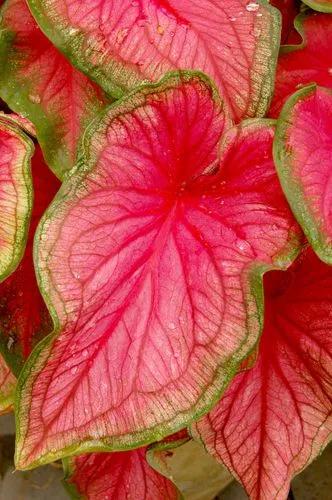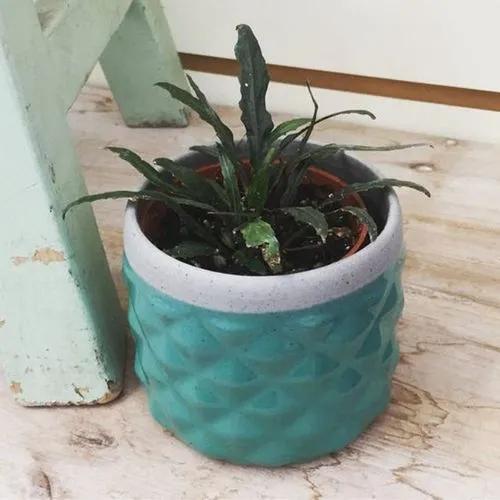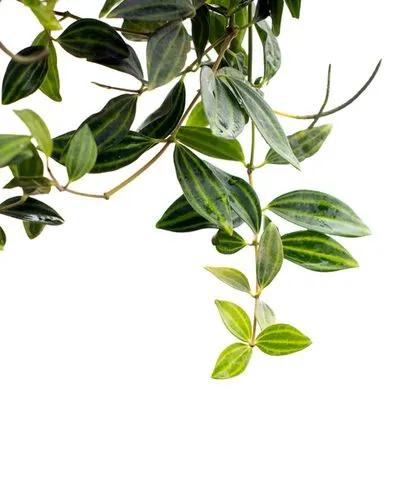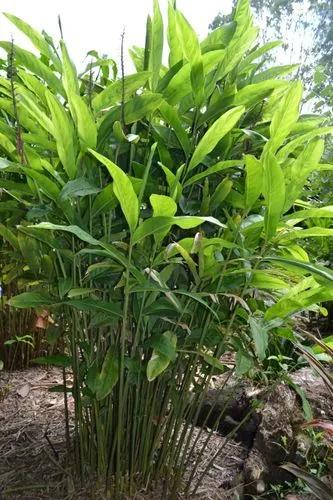Leaves from several to many (more often), crowded on the top of the stem in large plants. Petioles up to 1.3 m long, nested 1⁄3 - ½ of the length in the vagina. The leaf blade is oval-swept, straight-angled in outline, up to 120 cm long and 50 cm wide, more or less vertical, the edges are slightly or strongly sinuous, monotonously light green on both sides. The lower lobes of the leaf blade are 1/3 - ½ the length of the upper lobe, slightly spherical, often overlapping each other.Inflorescences are paired, growing from the axils of the leaves, equipped with scaly cataphylls. The pedicel barely exceeds the cataphylla during flowering. The bedspread is 13-35 cm long, with a tie at 1⁄6 of the length from the base. The tube was green and ovoid. The plate was covered with a wide-oblong-lanceolate, 10.5-29 cm long, hood-shaped during flowering, later bent, and then dried, scaly, light yellow. The cob is slightly shorter than the blanket, on a short leg. The female flower area is conically cylindrical, 1-2 cm long and 1.5 cm in diameter; the ovary is pale green, about 3 mm in diameter; the stigma is sessile, 3-5-lobed; the blades are conical, yellow. The sterile space is slightly shorter or equal to the female zone, whitish, very slightly narrowed at the point of narrowing of the veil; synandrodia rhombo-hexagonal, about 2.5 mm in diameter, paler below, not fully fused or with a central opening, the upper ones resemble sinandria. Male flower area is cylindrical, about 3-7 cm long, about 2 cm in diameter, whitish; synandria 5-9-staminate, rhombo-hexagonal, convex at the top due to the cap-forming ligaments, about 2 mm in diameter. The appendage is slightly thicker than the male zone at the base, then tapering, making up a significant part of the length of the cob, yellowish.
Alocasia Maharani Care
Alocasia 'maharani'



How to Care for the Plant

Water

Keep Alocasia plants moist all year; they are water-loving plants. There is a fine line with these plants. You want to keep the soil moist, but not soggy. They require less water during the winter months because the plant is dormant.

Pruning

Pruning an Alocasia zebrina falls under the heading of grooming. You should remove yellowing or damaged leaves, but the Zebrina is a naturally large plant that doesn't react to being cut back by becoming shorter and bushier.

Fertilizer

Alocasias can be heavy feeders, especially large specimens. Feed with liquid fertilizer during the growing season or frequent, small applications of granule fertilizer.

Sunlight

Medium to bright indirect light.

Soil

Alocasia Maharani likes rich, well-draining soil. It is a heavy feeder and requires regular fertilizing throughout the growing season.

Temperature

Temperature. The ideal temperature range for your Alocasia Maharani is between 54°F and 80°F (12-27 °C). If the temperature falls below 50°F and your plant is kept outside, you should bring it in.

Container

In pots and containers, it remains under 8 to 14 inches in size.

Additional

Alocasia are considered highly toxic and should be kept away from pets. Alocasia Maharani, commonly known as the 'Grey Dragon', is a rare but delightful dwarf type of 'jewel' originating from South East Asia. It is a hybrid species that displays thick silvery green leaves that are rough to the touch and quite leathery. The plant will generally grow to around 12” in height.

Popularity

302 people already have this plant 43 people have added this plant to their wishlists
Discover more plants with the list below
Popular articles






